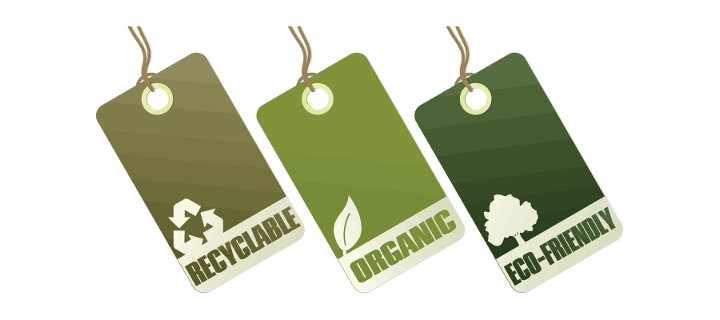Organic and sustainable, both the terms are interrelated. Sustainability is the need of today’s environment. Humanity should do every possible practice to maintain sustainability in every phase of the world. Most of the time we praise the end result of a product and rarely bother about its procedure of production. Consider the clothes we wear or make garments of, the synthetic ones including polyester, nylon, acrylic, or other fabrics are manufactured chemically that can create long-term pollution. The textile industry works with a variety of procedures and each process influences nature differently. Just like other industries Textile industry is also responsible to provide quality service along with sustainable solutions.
Connection Between Organic Fabrics and Sustainability
Basically, fabric consists of some raw material that can be any fiber like cotton, silk, rayon, etc., and construction that can be twill weave, knit, or weave of different types. Essentially, organic fibers are made without any use of pesticides, insecticides, herbicides, or any other harmful chemicals. Organic farming or sustainable fashion is better for the environment at large. Organic fibers are naturally grown under national organic standards that are Global Organic Textile Standard and without synthetic fertilizers or chemicals. Although there are some pros & cons for each synthetic and natural fiber. The thing that needs to be understood is that natural fibers like organic cotton are environment friendly when no pesticides or insecticides are used. However, when these fabrics are processed chemically to make yarn or other fabrics, the organic fabrics got polluted at that phase. Get along to explore different organic fibers for sustainable fashion.
Hemp– It is the most sustainable fiber plant. Its natural antibacterial and antimicrobial properties make it an incredibly amazing organic fiber. To grow it, there is no requirement of any pesticides, fungicides that make it more sustainable. Hemp naturally replenishes the soil and nourishes it. As it has long roots, it does not contribute to soil erosion. It is resistant to UV light and also to mold & mildew. Hemp tends to get softer with wash and it holds durability. It needs less water and energy to be grown. It wrinkles easily.
Linen– It is the oldest textile out of all other fabrics. It was used in ancient Egyptian times. It is made out of the fiber of the flax plant, the plant is known for flax seeds and linseed oil. The flax fibers are stronger than cotton. It is a highly absorbent and lightweight fabric. It is cool, breathable and one of the best fabrics to be worn in summer. It does not need very good soil conditions to grow. It is a durable and sustainable fabric. Linen is usually bleached for dying which is not eco-friendly. However, similar to hemp, linen also needs less water and energy to be grown.
Organic cotton– It is one of the most commonly used fabrics. Almost every one of us must have at least one cotton dress in our wardrobe. Cotton is comfortable and soft fabric. Regular cotton requires a lot of water and energy along with pesticides and chemicals. However, Organic cotton is a better solution that is grown without the use of any chemical. Therefore, we can classify cotton into three categories including regular cotton, organic cotton, and recycled cotton. So you can go for organic and recycled cotton if you are concerned about sustainability. Although, recycling cotton is not an easy procedure and it shortens the length of the fiber. So hemp and linen can be good alternatives for cotton.
Lyocell– Lyocell is made up of wood chips of a tree named eucalyptus. The wood chips are produced by thinning the tree instead of cutting it down. Wood chips are then converted to wood pulps and wood pulps into cellulosic fiber. It’s a fast-growing renewable resource of wood pulp having a low environmental impact. It is produced in a closed-loop processing method and without any use of pesticides and chemicals. The fabric processing involves dissolving wood pulps with a non-toxic solvent. It is highly breathable and durable. It uses 80% less water than cotton for production. It does not always hold dye well.
Modal– Modal is cellulose fiber made up of pulp of beech trees. It is 100% biodegradable and considered an eco-friendly fashion choice. It is resistant to fading and shrinking. This fabric is soft and light that holds colors. It is 50% more water-absorbent than cotton. It is a semi-synthetic fabric that undergoes some chemical processes to turn into yarn. It is a good alternative to a cotton Jersey.
Piñatex– It is a great alternative to leather. As we are aware that leather has a very bad impact on the environment. However, if Piñatex is treated correctly it is highly sustainable and has great longevity. It is made from pineapple leaves. The great thing about this fabric is that it does not require extra land, fertilizers, or water. Because it is the byproduct of existing agriculture. Basically, it supports the local communities. When fiber is moved from pineapple leaves the leftover can be used as biofuel or natural fertilizer. It is breathable and cruelty-free fabric.
Cupro– It is a vegan alternative to silk and it is a recycled form of discarded cotton. It is a regenerated cellulose fiber. However, it is exposed to some chemical processes, in the production of cuprammonium rayon. This fabric has low shrinkage and good absorbance. It is naturally wrinkle-resistant and smooth in texture. One of its cons is that it takes stains easily.
Read Also: 7 Tips For Naming Your Business the Right Way
To sum up, everything that has been stated so far, these are the fabrics worth trying. Whenever you are shopping, check for 100% biodegradable fabric. When there is a mix that fabric is no longer considered organic fabric. And if you are a part of the fashion industry, you should look for possible sustainable solutions having the least impact on the environment As a fashion designer, you should always strive to improve your supply chain by choosing eco-friendly fabrics. Opting for sustainable fabrics each one of us can do a little to conserve Earth and its natural resources. Fabcurate understand all of these aspects and use only organic fabric for their clothes.










